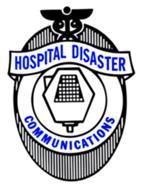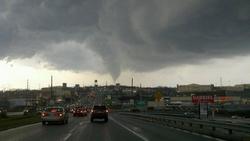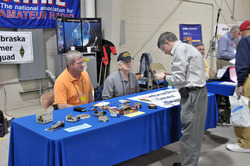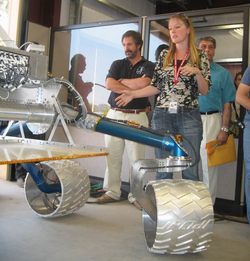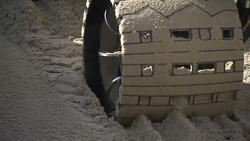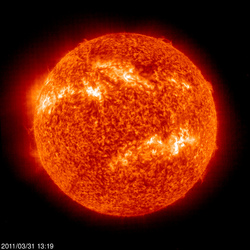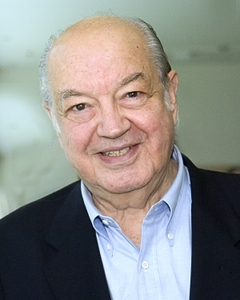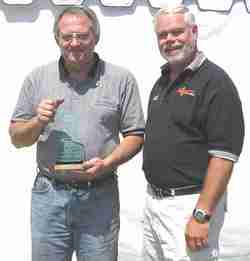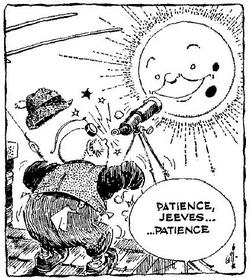 March 31, 2011 John E. Ross, KD8IDJ, Editor
| |||||||||||||
+ Available on ARRL Audio News + Public Service: Hams Help When Phones Fail at Southern California Hospital
When nurses and other caregivers picked up their phones at Children's Hospital of Orange County in California in the early morning on March 21, there was no dial tone. A power surge caused the central processor in the hospital's phone switch to fail. Following established procedures, the lead operator at the hospital switchboard immediately activated the Hospital Disaster Support Communications System, using an off-switch tie-line to reach April Moell, WA6OPS, head of this ARES® group that specializes in helping hospitals when their communications fail. Read more here. Public Service : Western Pennsylvania Hams Respond as Tornado Sweeps Through Area
At approximately 4:30 on the afternoon of Wednesday, March 23, severe thunderstorms started to roll into Westmoreland County, Pennsylvania, producing golf ball-sized hail and heavy winds. Members of the Westmoreland County Public Service/ARES® group began to meet on the W3CRC repeater in Derry, Pennsylvania, which serves as the main ARES®/SKYWARN repeater in Westmoreland County. Soon after, the National Weather Service issued a tornado warning for the area and the Public Service Net was opened formally at 5 PM. Walter Bashaw, W3ZEH, began taking check-ins and reports of severe weather, relaying them to the NWS in Pittsburgh. Read more here. + Amateur Radio in Space: Two Astronauts Get Their Ham Ticket
Even though they aren't scheduled to go to the International Space Station until 2013, two astronauts -- Chris Cassidy and Luca Parmitano -- are now licensed amateurs. Cassidy, who received the call sign KF5KDR, is scheduled to head to the ISS in March 2013 as part of Expedition 35. Parmitano -- an Italian from the European Space Agency -- is KF5KDP; he goes to the ISS three months later in May, as part of Expedition 36. "Our aim is to have at least one crew member licensed and trained in on-air protocol, who is somewhat excited about ham radio and the Amateur Radio on the International Space Station program, per expedition," explained ARRL ARISS Program Manager Rosalie White, K1STO. NASA ISS Ham Radio Project Engineer Kenneth Ransom, N5VHO, told the ARRL that both Cassidy and Parmitano are "excited and interested in the educational aspects of Amateur Radio on board the ISS." Read more here. + NCVEC Deletes Question from Amateur Extra Question Pool
Due to the FCC revising the rules concerning Spread Spectrum, the Question Pool Committee of the National Council of Volunteer Examiner Coordinator ( NCVEC) has decided to delete a question from the Amateur Extra class question pool. According to QPC Chairman Rol Anders, K3RA, as of April 29 when the new Spread Spectrum rule change goes into effect, the answer to question E1F13 in the Amateur Extra class question pool will no longer be correct . Read more here. + ARRL Nebraska Section Introduces "Elmer Squad" The Nebraska Elmer Squad made its first official appearance earlier this month at the ARRL Nebraska State Convention in Lincoln. Darwin Piatt, W9HZC, and Darrel Swenson, K0AWB, were on hand to answer questions about the Squad's mission and plans. According to ARRL Nebraska Section Manager Art Zygielbaum, K0AIZ, the Squad is gathering a list of volunteer Elmers throughout the state who are willing to assist not only new Amateur Radio operators, but current operators who need some technical assistance.
"Mentoring of new or prospective hams will be an ongoing part of the mission," Zygielbaum told the ARRL. "The intent is to have Elmers participate in their local area radio clubs and give presentations on various subjects relating to Amateur Radio." Nearly a dozen hams signed up at the State Convention to be a part of the Elmer Squad. Piatt and Swenson said that they believe that people should remember that Amateur Radio is a hobby -- and it should be fun. Both men are QRP operators and builders; part of their enjoyment comes from passing on the fun of building to others. The Elmer Squad will be traveling around Nebraska this summer and fall, giving presentations and signing up more Elmers. In addition, Piatt and Swenson are working on a Nebraska Elmer Squad website. Zygielbaum said that this will provide a central contact point to match Elmers with those who would like assistance. Once the site is up and running, the URL will be posted on the ARRL Nebraska Section website. "Our motto is 'Hey, this is a hobby -- it is supposed to be fun!'" Zygielbaum explained. "We're looking for good people to help us keep it that way." + New Mars Rover to Feature Morse Code As the Jet Propulsion Laboratory (JPL) builds the next Mars rover -- this one is named Curiosity -- to deploy to the red planet in the fall of 2011, they're having a little fun with it. Back in 2007 when the Curiosity team was putting together the rover, its wheel cleats had a raised pattern with the letters "JPL," leaving a little stamp of the rover's birthplace everywhere it rolled. "At the time, I asked whether the real rover would have those wheels, and they said, no, they weren't going to get to advertise JPL with each turn of each of the rover's six wheels; the real rover would have some other pattern," said Emily Lakdawalla of The Planetary Society in her blog. Lakdawalla is the organization's Science and Technology Coordinator.
Lakdawalla said that there is nothing special about the shapes of the markers in Opportunity's wheels; they are just square holes through the wheels through which the wheels were bolted to the lander during cruise and landing." Opportunity is the name of the rover that went to Mars back in 2003. "But Curiosity didn't need holes in its wheels for attaching to any lander -- there isn't one. So the engineers got to make the markers in any shape they wanted to." But in March 2011, she saw a video of the rover as it is today: "I had to chuckle at those 'visual odometry markers' [on its tires]. Before I explain why, I'll point out that they really are useful things to have in rover wheels. The repeating pattern of the 'visual odometry markers'...makes it fairly easy for both the rover and human operators to determine visually how far the rover has roved using rear-view imagery."
So what pattern did JPL choose to put on Curiosity's wheels? One that Lakdawalla called "very amusing. The holes are in a pattern of short squares and longer rectangles -- almost like dots and dashes. Morse code." And what does it spell out in Morse code? JPL. According to JPL, Curiosity is about the size of a small SUV -- 10 feet long (not including the arm), 9 feet wide and 7 feet tall -- or about the height of a basketball player -- and weighs 2000 pounds. It features a geology lab, rocker-bogie suspension, a rock-vaporizing laser and lots of cameras. Curiosity will search areas of Mars for past or present conditions favorable for life and for conditions capable of preserving a record of life. It is set to launch between November 25-December 18, 2011 from Cape Canaveral, Florida and will arrive on Mars between August 6-20, 2012. The prime mission will last one Mars year, or about 23 Earth months On the Air : NIST to Conduct Time and Frequency User Survey
The National Institute of Standards and Technology's (NIST) Time and Frequency Division is conducting a survey to learn more about its users, seeking to determine how the agency can make its services more useful in the future. NIST services include WWV, WWVH and WWVB, which provide reference time and frequency signals via radio. The NIST also provides the Internet Time Service -- which provides accurate time synchronization to computer systems -- and several other services to offer accurate time information via telephone or web pages. Radio amateurs are encouraged to complete the survey. Read more here. Solar Update
Tad "The Sun is shining, it's a lovely day" Cook, K7RA, reports: The activity we could see recently on our Sun's far side -- thanks to the STEREO mission -- has been rotating into view, producing some nice sunspot activity, resulting in improved upper-HF propagation. Compared to the previous week (March 17-23), the past week (March 24-30) showed average daily sunspot numbers up more than 61 points to 102.1, while the average daily solar flux was up nearly 20 points to 114.7. Geomagnetic conditions were quieter as well, and reports from readers show greatly improved propagation on 20, 15 and 10 meters. This table shows a new sunspot group on March 23, two more groups appeared March 24, two more on March 25 and another two more on March 27. The latest prediction from USAF/NOAA sees improving conditions, with the projected solar flux for March 31-April 1 at 125 and 130, then 135 on April 2-7. The predicted planetary A index is 10 and 8 on March 31 and April 1, followed by 5 on April 2-7 and 8 on April 8. Conditions should be very good for the next week, especially when compared to this time last year. Look for more information on the ARRL website -- including an updated forecast and reports from readers, as well as the latest 3-month moving average of sunspot numbers -- on Friday, April 1. For more information concerning radio propagation, visit the ARRL Technical Information Service Propagation page. This week's "Tad Cookism" is brought to you by the song Avenue Q Theme from the musical Avenue Q. + Silent Key: Internet Pioneer Paul Baran, W3KAS (SK)
Paul Baran, W3KAS -- an engineer who helped create the technical underpinnings for the ARPANET, the government-sponsored precursor to today's Internet -- died March 27 at his home in Palo Alto, California. He was 84. According to his son David, the cause of death was related to complications from lung cancer. Baran was one of the three inventors of packet-switched networks. In the early 1960s, Baran was working on a "survivable" communications system when he thought up one of its core concepts: Breaking up a single message into smaller pieces, having them travel different, unpredictable paths to their destination and only then putting them back together. It's called packet switching and it's how everything still gets to your e-mail inbox. Read more here. + Silent Key: Owner of Industrial Communication Engineers Mike Koss, W9SU (SK)
Mike Koss, W9SU, of Indianapolis, Indiana, passed away Monday, March 28. He was 57. According to his friend Brian Smith, W9IND, Koss was found on his workshop floor and paramedics were unable to revive him. Industrial Communications Engineers (ICE) is well known in the amateur community for surge protectors, line filters, RF switches and more. On March 31, ICE released the following statement concerning the company: "Industrial Communication Engineers (ICE), Ltd, its employees and the Indianapolis Amateur Radio community mourn the passing of company founder Mike Koss, W9SU, on March 28, 2011. Due to Mike's sudden and unexpected death, ICE has temporarily suspended accepting new orders. We are in the process of reorganizing the company, as well as identifying and fulfilling current open orders and products returned for repair. Read more here. This Week on the Radio This week:
Next week:
All dates, unless otherwise stated, are UTC. See the ARRL Contest Branch page, the ARRL Contest Update and the WA7BNM Contest Calendar for more info. Looking for a Special Event station? Be sure to check out the ARRL Special Event Stations Web page. Upcoming ARRL Section, State and Division Conventions and Events
To find a convention or hamfest near you, click here. ARRL -- Your One-Stop Resource for Amateur Radio News and Information
Click here to advertise in this newsletter. | |||||||||||||
